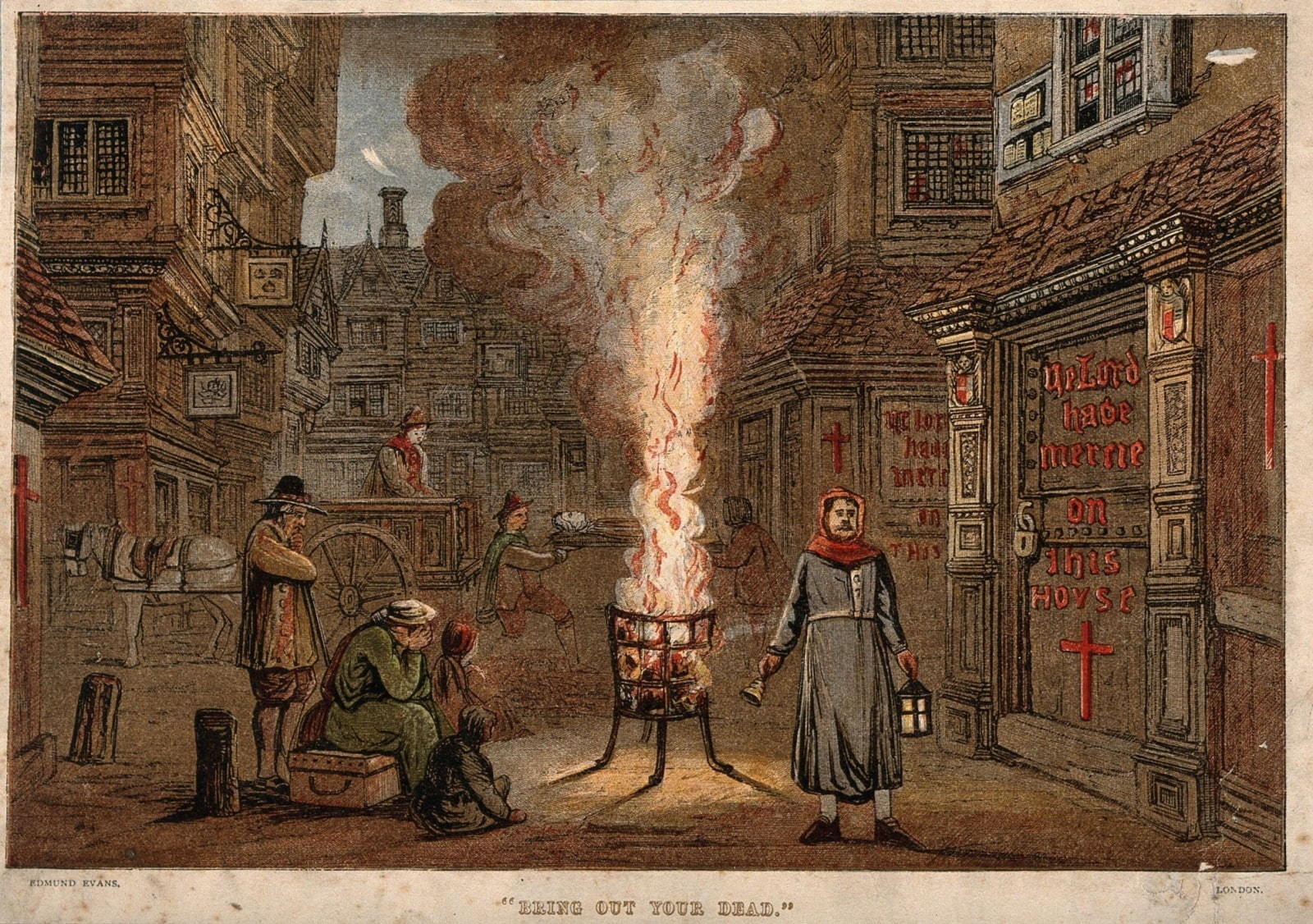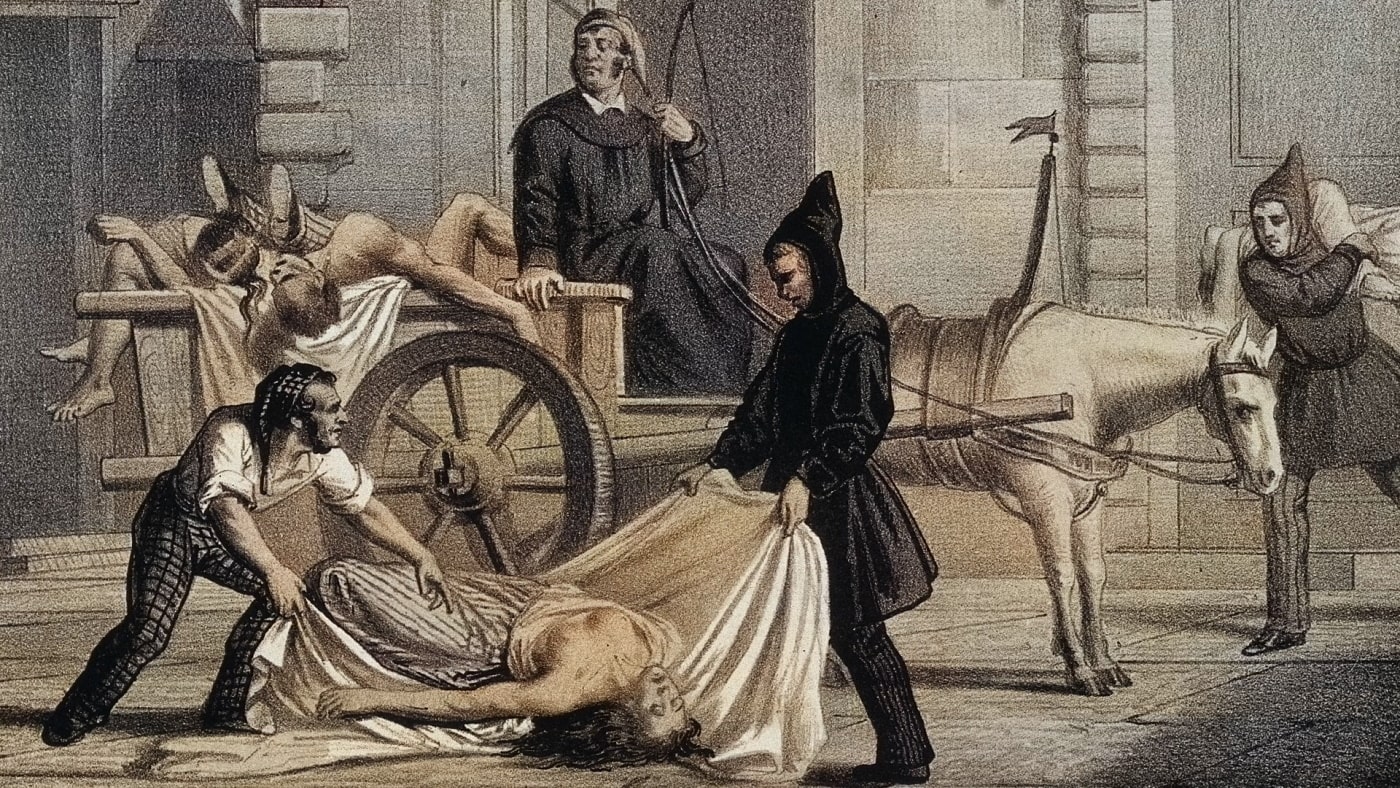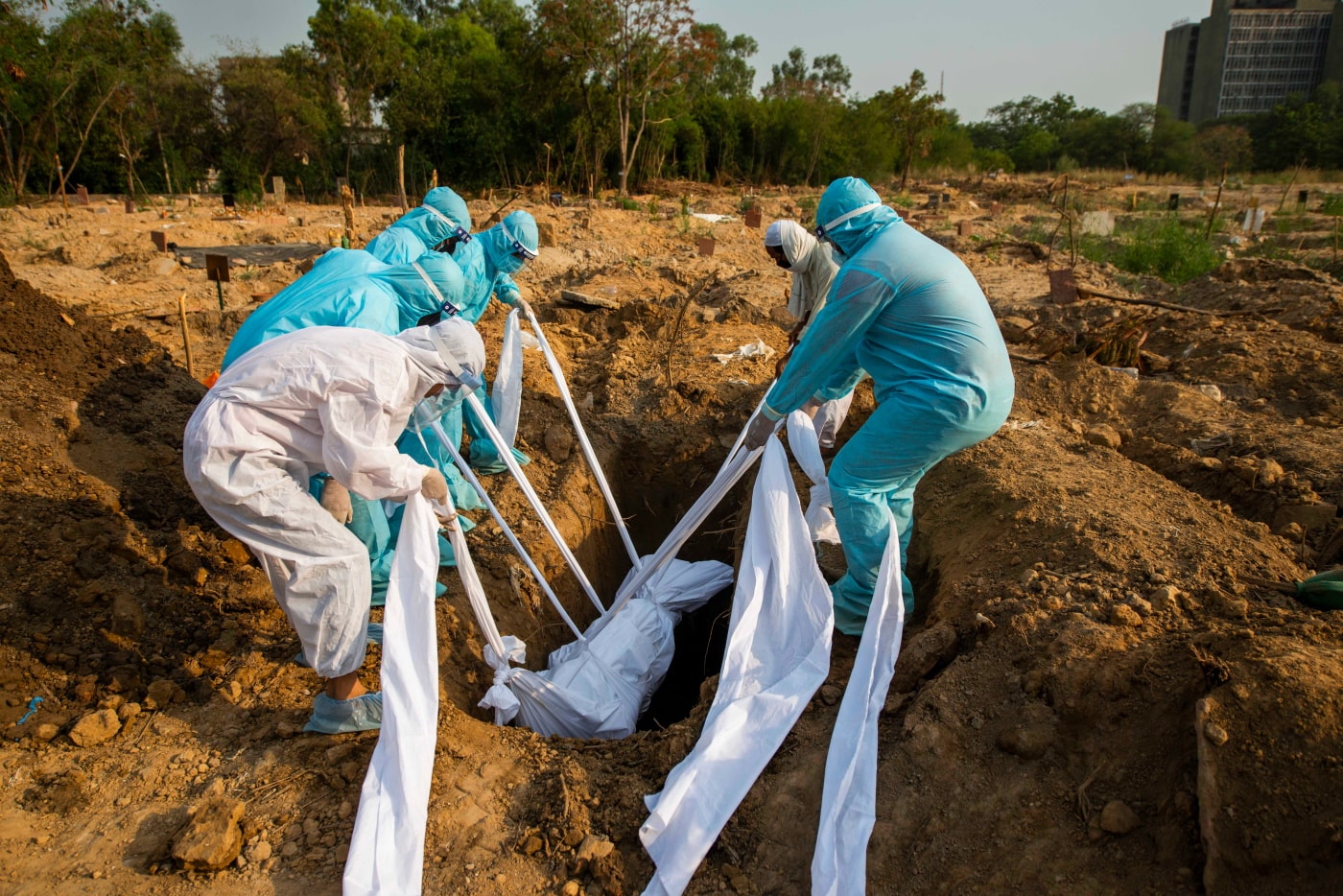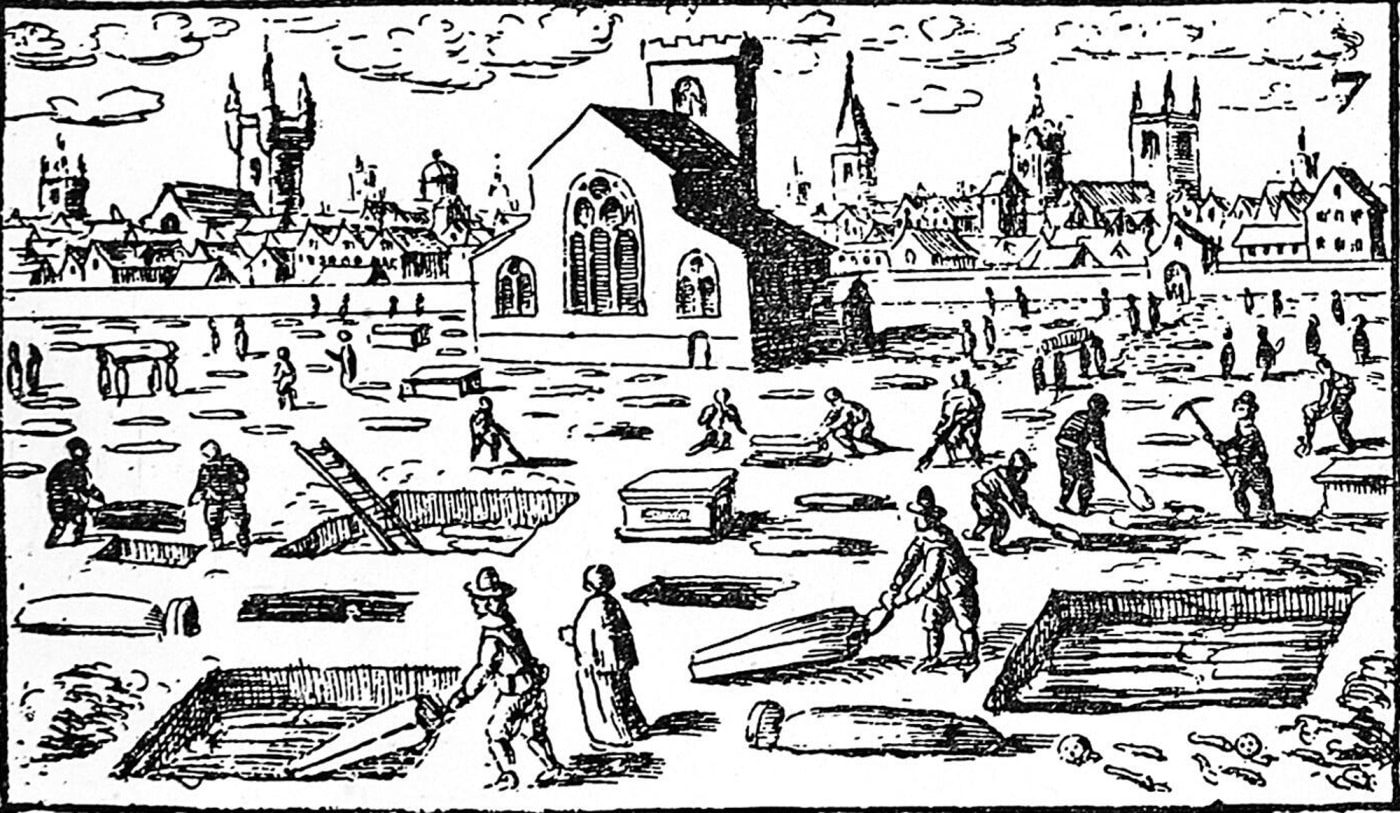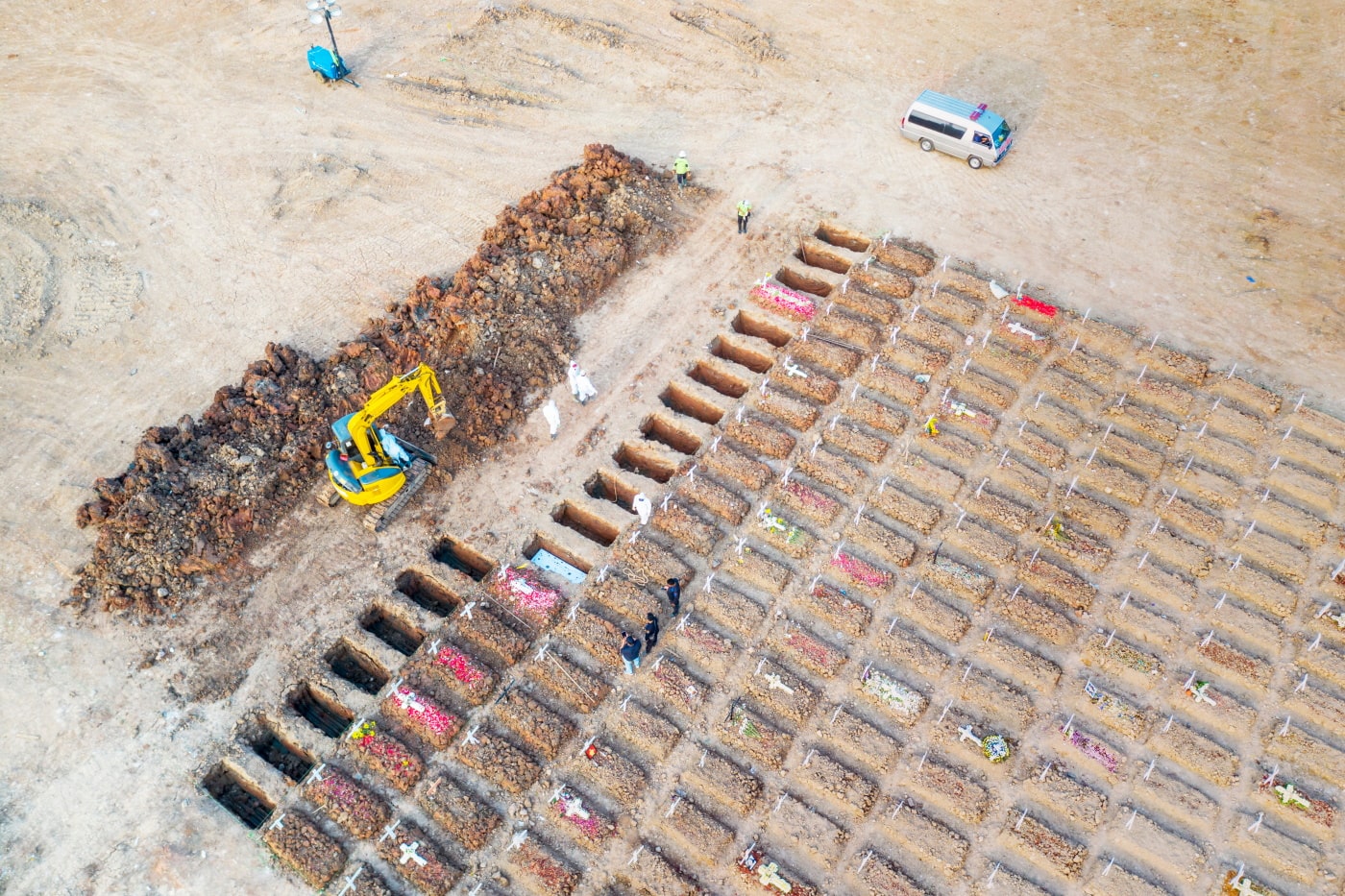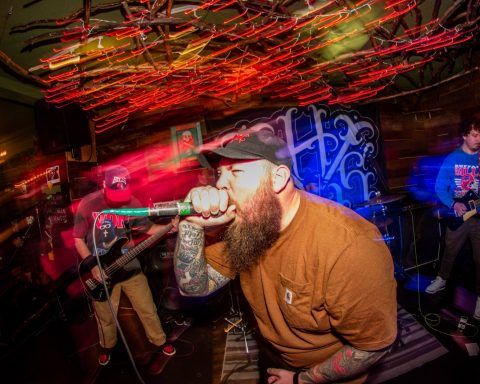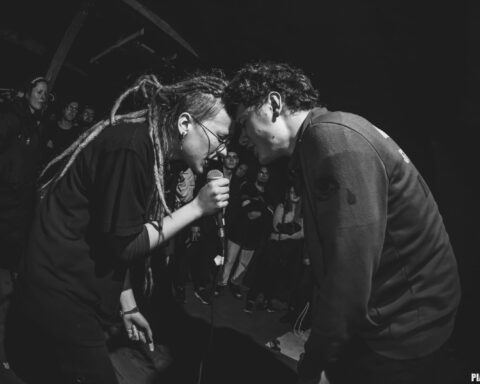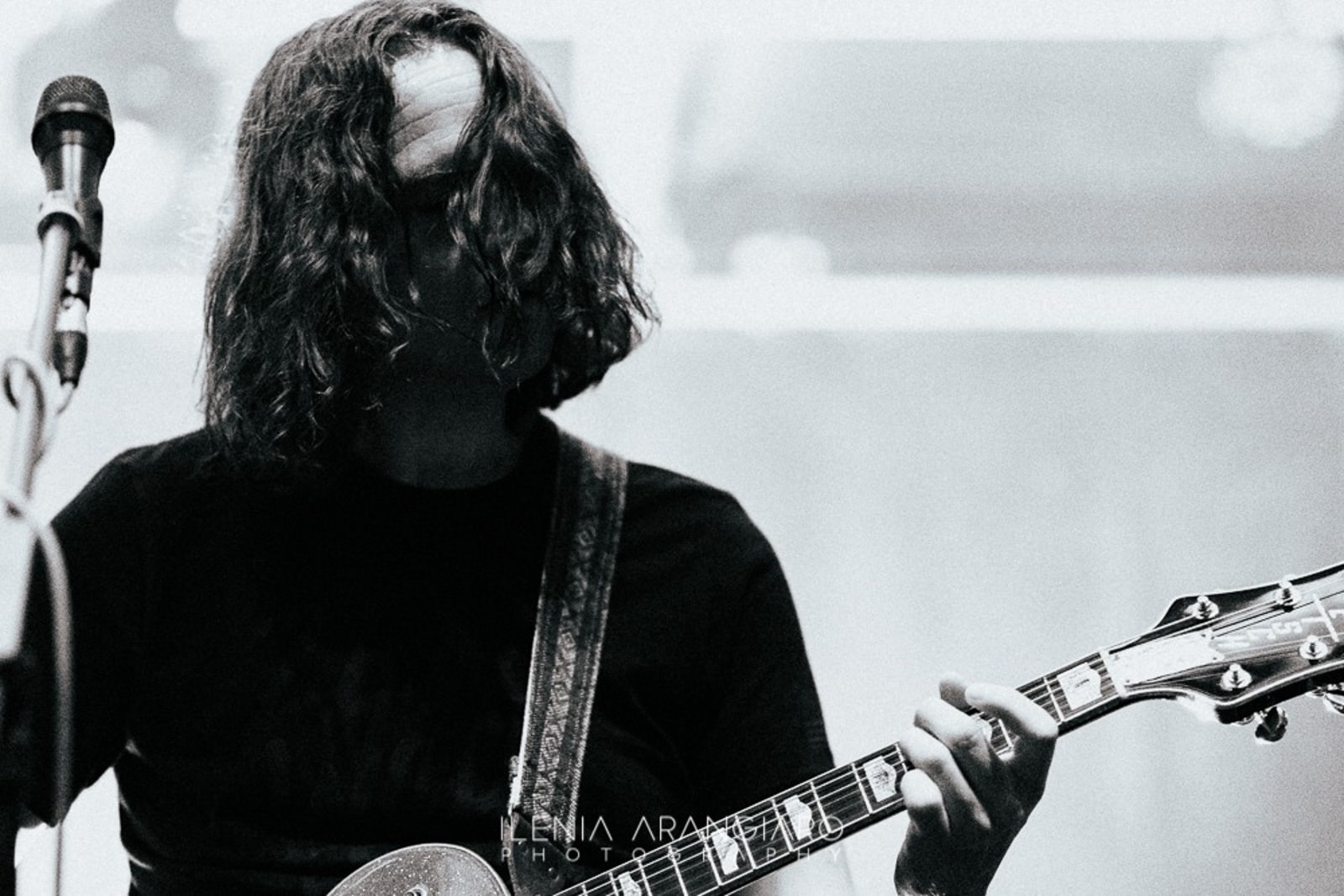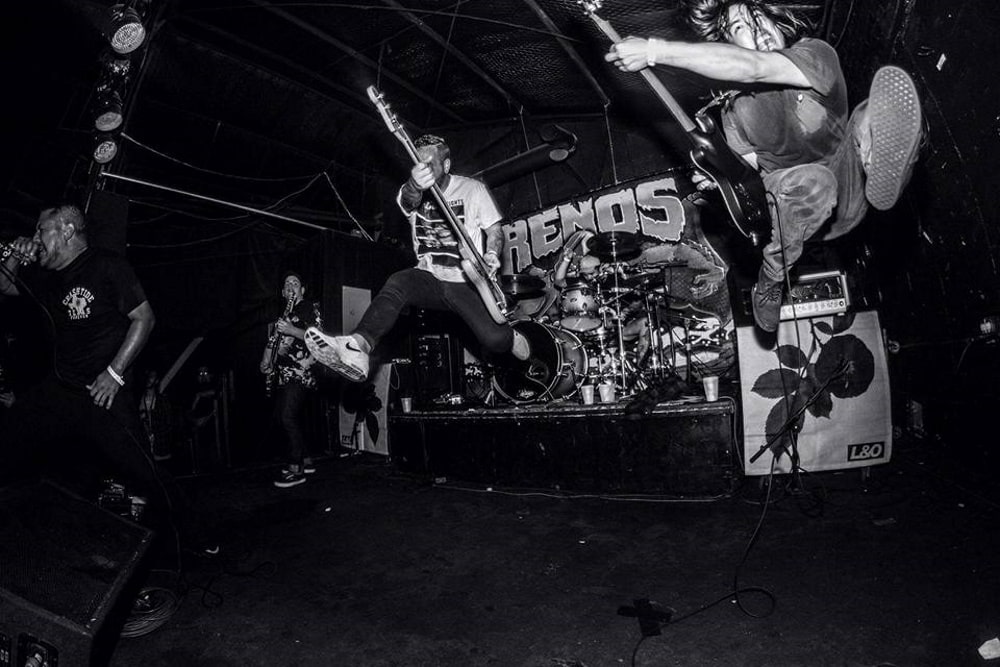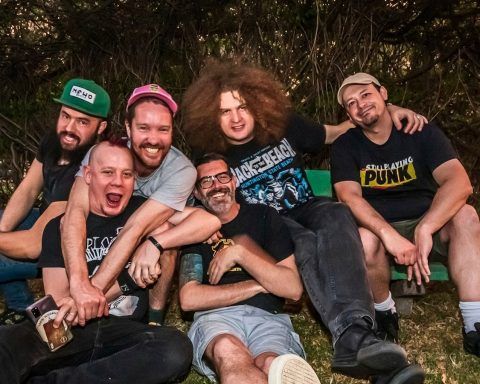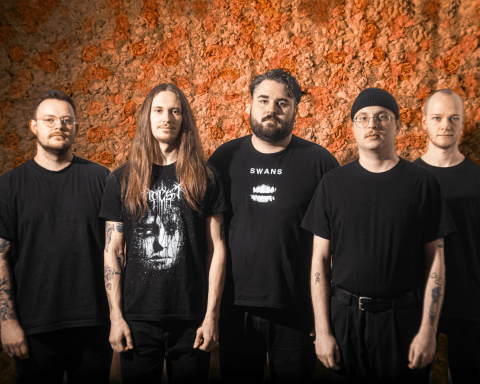The Chronicles of Manimal and Samara (TCOMAS), an independent and self managed duo from London, UK, use poetry performance in their eclectic music to talk about issues pertinent to society today. Their new single ‘Count the Dead’, from their second album just received a new music video above, and today we’re stoked to give you an in-depth study of their craft, through a special essay and their first-hand commentary below.
The events of 2020-21 have exposed the fragility of our global systems and the flawed foundations on which modern societies and economies are built. ‘Count the Dead’ brings attention to complex issues concerning the value of human life. The song draws attention to the social and economic injustices that plague society, and the violent health inequalities that have been further exacerbated by the global pandemic, which has now claimed more than 4 million lives worldwide.
“The new song is about the value of human life.” – comments the band. “We composed this song as a protest against world leaders, whose negligence and recklessness have resulted in one of the largest ‘avoidable’ losses of lives in generations.”
Continuing the themes addressed in ‘Love in the Time of Pestilence’, ‘Count the Dead’ is the second instalment of songs addressing the ongoing pandemic and global crisis. At a time when the world appears to be more divided than ever before, discourse has never been more important, and urgent.
Hailed as “pioneers of a new form of expression” through the performance of poetry in music, The Chronicles of Manimal and Samara (TCOMAS) are a UK-based duo comprising Daphne Ang (Singapore) and Andrea Papi (Italy) who came together in early 2020.
Based out of the heart of London’s vibrant rock scene in Camden Town, London, the duo’s debut album, Full Spectrum, released on 26 February 2021, fills a gap in music by bringing literature, theatre, and history together, fusing rock, metal and electronic music with poetry performance. Their upcoming second album, due for release in 2022, is a cathartic expression of outrage ignited by the global crisis. The new album’s politically charged and satirical themes reveal a more aggressive side of the band. Recorded between April and August 2021 in the artists’ studio in Camden Town, London, United Kingdom, the album combines instruments and influences old and new, east and west. The lyrical content protests and petitions for the issues in urgent need of systemic change, opening our eyes to the grim realities of modern society and the darkness of human nature.
𝐶𝑂𝑈𝑁𝑇 𝑇𝐻𝐸 𝐷𝐸𝐴𝐷
by The Chronicles of Manimal and Samara
The global pandemic and the events of 2020-21 have truly exposed the fragility of our global systems and the flawed foundations on which modern societies and economies are built. The Covid crisis has revealed the deep-seated social and economic injustices that plague our societies, and the violent health inequalities that have been further exacerbated by the pandemic which has now claimed nearly 5 million lives worldwide.
‘Count the Dead’ is about the value of human life. To us, a life is priceless. But the events of the pandemic have made us ask the question – how much are our lives really worth? We come face to face with the reality that you are much more likely to die of a virus because you are poor. It has become the norm to accept the fact that lives will be saved, until that cost becomes too high.
We composed ‘Count the Dead’ in protest of the governments across the world who have failed to act and protect their communities. People need to remember that it was the wanton recklessness and negligence of many world leaders that resulted in one of the largest ‘avoidable’ losses of lives in generations. At a time when the world appears to be more divided than ever before, discourse has never been more important, and urgent.
We were angered by many issues that unravelled itself throughout the pandemic.
To mention a few:
The government policies which favoured saving the economy over saving lives.
‘Pandemic profiteering’. Where rich nations refuse to share vaccines with poorer countries, and big pharmaceutical companies reap billions in profits by selling vaccines to the highest bidder, leaving millions in poorer countries without access to vaccines. In our view, pandemic profiteering is a human rights violation. This needs to be scrutinised and these perpetrators must be brought to justice.
The corruption and cronyism in (some) governments who allowed politically connected companies to reap billions in profit from the government’s procurement of protective equipment that our lives depend on, exposing taxpayers to significant financial burdens for decades to come. We need to start prioritising people’s lives over the profit of the few.
Andrea: “I was so angry with what I was witnessing. the incapacity and the bullshit of the ‘people in power’, who take our tax contributions to pay for dodgy procurements for personal gain, then go on to leave us to die to save the economy that they ruined in the first place. With these thoughts in the back of my mind, I grabbed my guitar and the riff of the chorus just came out, like that. From that, I developed the track further, and recorded the rest of the guitars, added the drums, and recorded the bass. Daphne later recorded keys and finally, the vocals.”
Daphne: I wanted the lyrics to be truly the voice of the people, while also being backed by factual evidence. So I did extensive research into the media’s coverage of the pandemic, scientific and statistical studies, and academic journals.
‘Count the Dead’ is actually the second instalment of songs addressing the ongoing pandemic and global crisis, and continues the themes addressed in a song from our debut album, ‘Love in the Time of Pestilence’. We composed and recorded ‘Love in the Time of Pestilence’ during the first wave of Covid-19 in Europe, and we chose to release this track in November 2020, when Europe went into a second Lockdown. The spoken lyrics combine original writings with historical quotes about mankind’s experience of disease outbreaks. The lyrics include Latin proverbs and quotes from historical figures such as Aeschylus, Benjamin Franklin, and George Orwell. This is to remind humanity that if we don’t learn from history, we are doomed to repeat it.
Read “Love in the Time of Pestilence” Lyrics
To drive this message home even more in the video, we art historical works, archival photographs, and historical film footage that depicted scenes of suffering from the Black Death, the Smallpox and Bubonic plagues, and other epidemics throughout history.
Stills taken from“Love in the Time of Pestilence” Music Video:
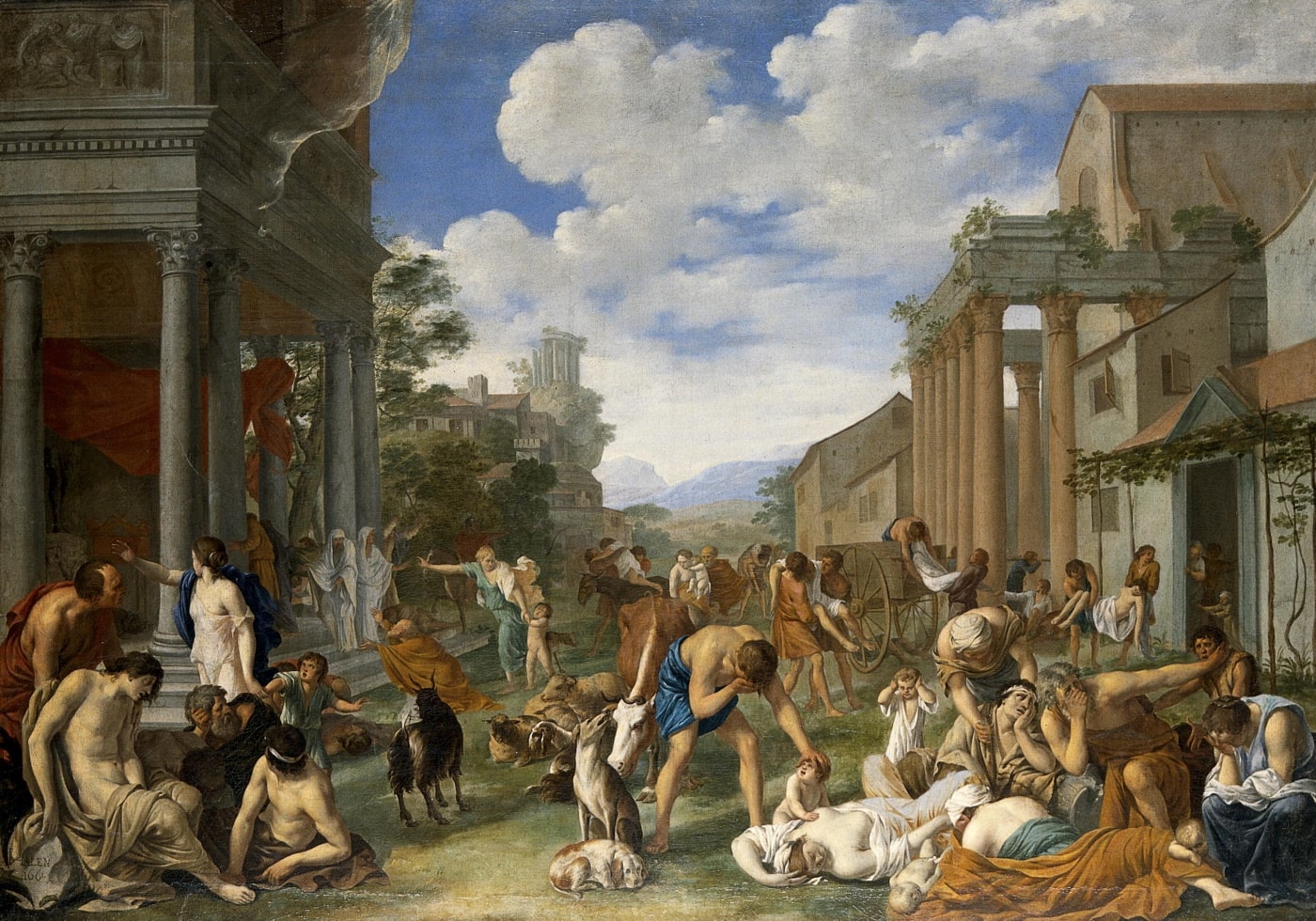
Figure 2: Saint Carlo Borromeo: with a rope around his neck, he kneels before the Cross in the plague-ridden streets of Milan in 1576. Coloured aquatint by L.A. Garneray, 1820, after Martinet. Wellcome Collection. Public Domain Mark
A street during the Great Plague in London, England (1664-1666) with a death cart and mourners. Colour wood engraving by E. Evans..Wellcome Collection. Public Domain Mark
Figure 4: Disposal of dead bodies during the cholera epidemic of 1835 in Palermo. Lithograph by G. Castagnola. Wellcome Collection. Public Domain Mark
When we were assembling the video for ‘Love in the Time of Pestilence’ in October 2029, right before the second wave of Covid, we thought that this time, we would get it right, and that these horrific scenes from the distant past would not reoccur in the present. To our horror, they did, as the images we chose to use in both the videos shows.
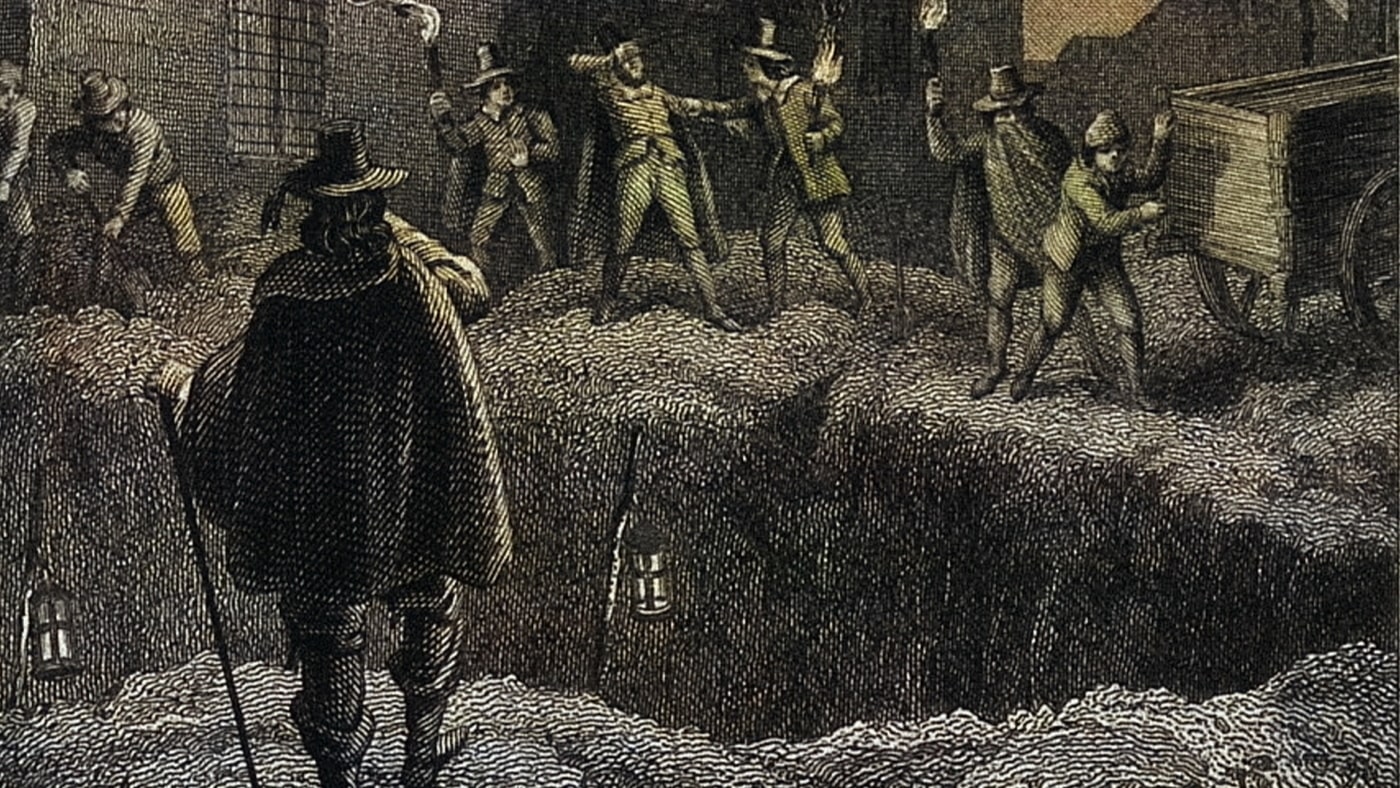
Figure 6: Delhi/India June 16, 2020: Relatives dressed in PPE carry the body of a victim who died from Covid-19 to be buried at a designated graveyard. PradeepGaurs / Shutterstock.com
Figure 7: A group of men lower the body of a dead man onto a pyre of logs prior to a Hindu cremation ceremony in Bombay at the time of the plague. Photograph, 1896/1897. Wellcome Collection. Public Domain Mark
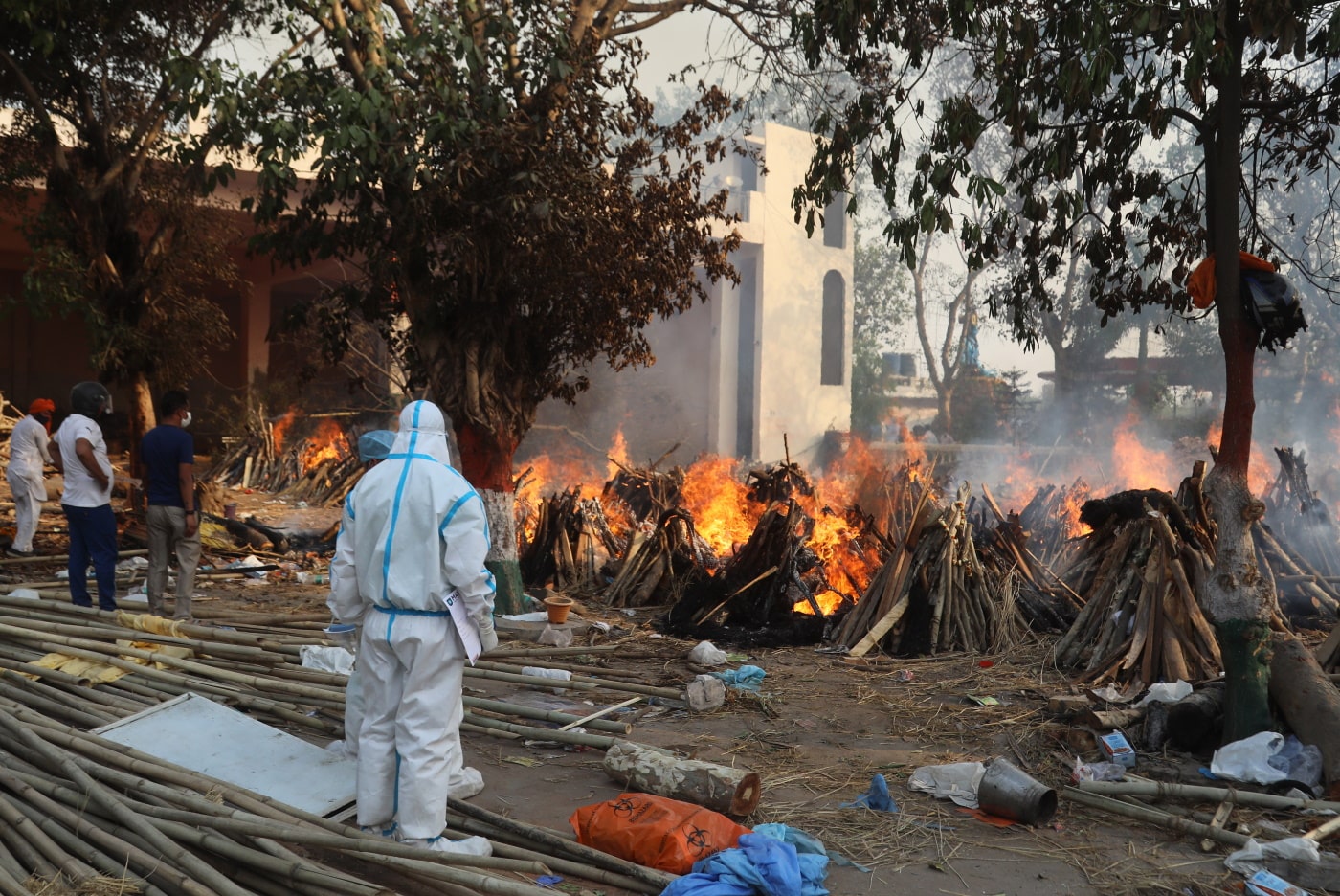
Figure 9: Plague in London, 1665. Wellcome Collection. Attribution 4.0 International (CC BY 4.0)
Figure 10: July 26, 2021. Aerial view of an excavation of grave pits for the burial Covid-19 victims at Rorotan graveyard in North Jakarta, Indonesia. Creativa Images / shutterstock.comWhat are we to learn from the Covid-19 pandemic? While we still have a long way to go before we can declare victory over this virus, the past two years have been a harsh lesson in humility for humanity as it has shown the destruction and devastation a pathogen can cause.
The recent years have also made us see the vulnerability of human life and society. Hence, it has become even more pertinent for us to demand policy makers to come together in global solidarity, in order to be prepared for future pandemics, climate change, and the many other challenges and crises that surely await us in the 21st century.




